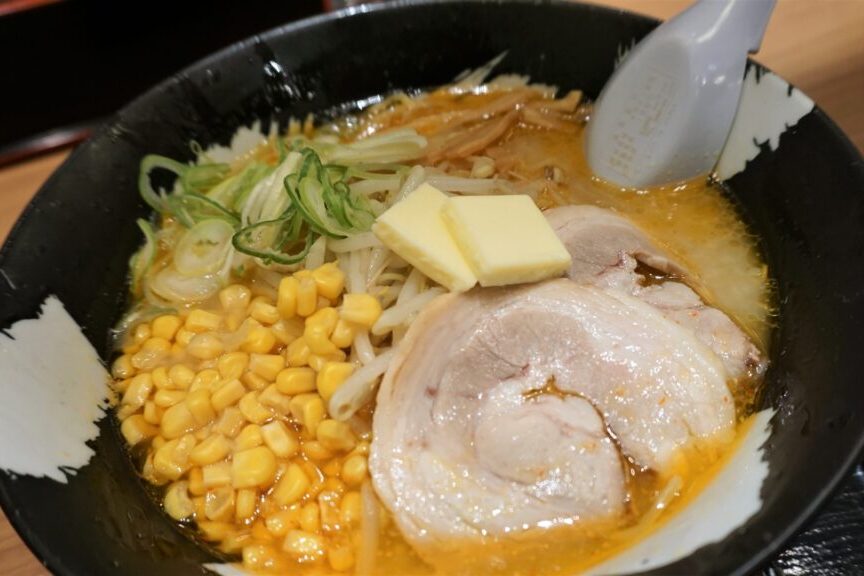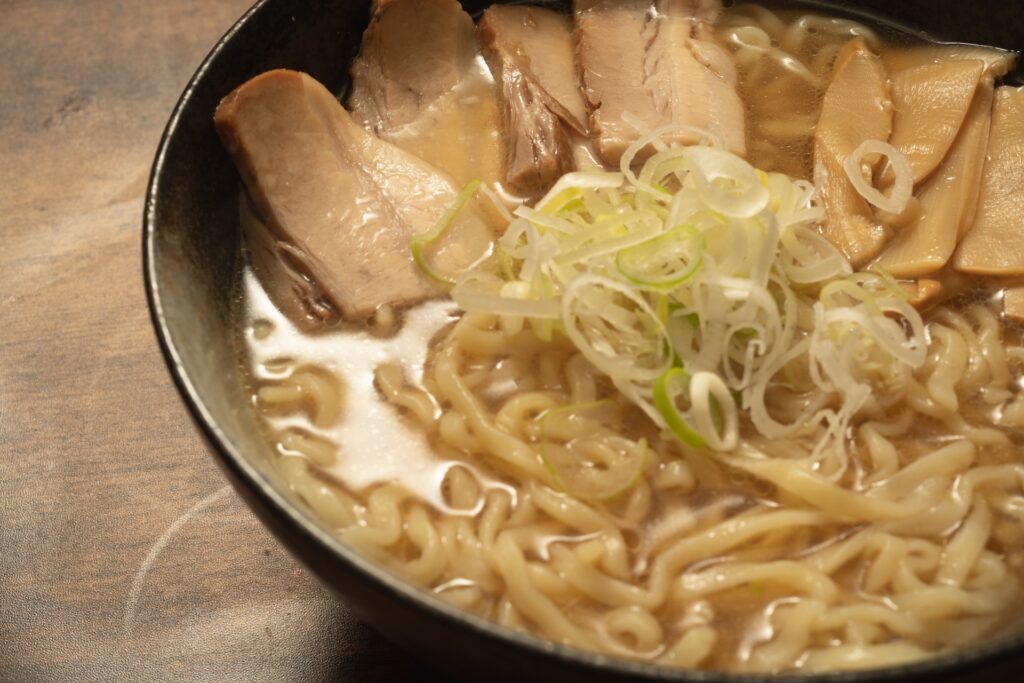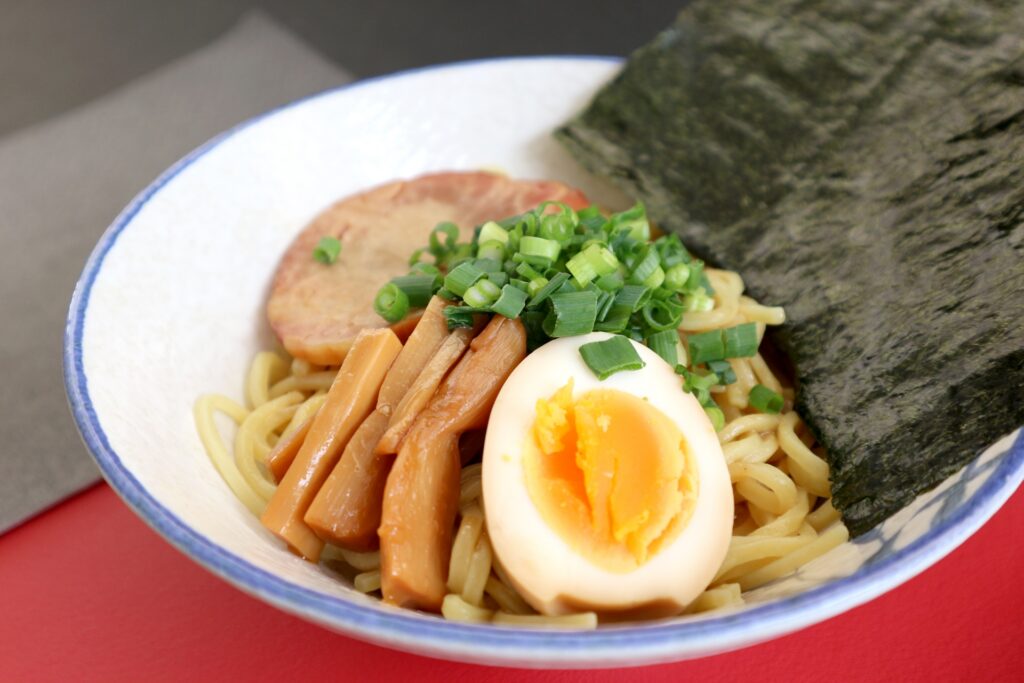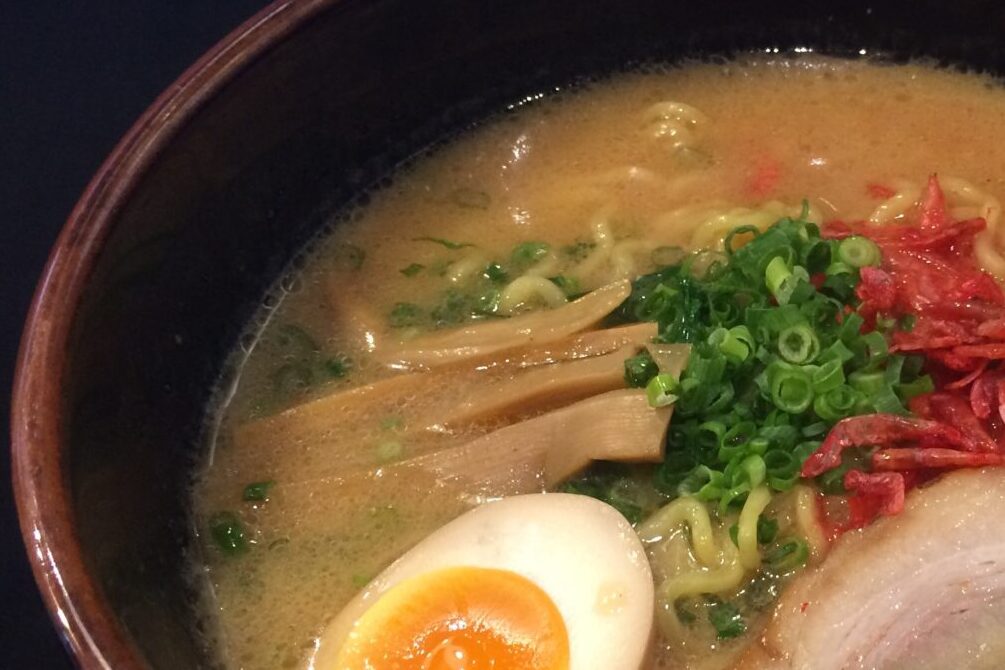
The three types of ramen, Sapporo’s miso ramen, Hakodate’s salt ramen, and Asahikawa’s soy sauce ramen, are cherished by the locals as the “Three Great Ramens of Hokkaido.” However, in recent years, there are a growing number of innovative ramens that are steadily gaining popularity.Therefore, this time, we will introduce you to a compilation of Hokkaido’s representative ramens and trending novelty ramens.
Contents
Sapporo Ramen(札幌ラーメン)
When speaking of the representative ramen of Hokkaido, it’s Sapporo Ramen.Currently, the mainstream is miso ramen, which consists of ramen noodles in a broth made by combining pork bone soup with a miso base, topped with vegetables fried in lard and garlic. However, the original version created before the war was a surprising salt ramen.After the war, it became a soy-flavored ramen using a pork bone soup. In 1955, Mamoru Omiya of “Aji no Sanpei” developed a miso ramen and served it to Yasuji Hanamori, former editor of “Kurashi no Techou”. When Hanamori wrote an article about it, it became known nationwide.The noodles of Sapporo ramen are primarily medium-thick wavy noodles with high water content, which pairs well with miso soup.Toppings include classic chashu (braised pork belly) and bamboo shoots, as well as stir-fried vegetables such as bean sprouts, cabbage, and onions.Some shops, aiming to showcase the uniqueness of Hokkaido to tourists, may even add corn and butter, or use crab and scallops as toppings.
If you want to enjoy delicious Sapporo ramen while sightseeing, head to the “Original Sapporo Ramen Yokocho.” Once you pass under the neon signs, you’ll find 17 ramen shops, representative of Sapporo, lining the street in a nostalgic atmosphere. As it’s within walking distance from Susukino, it’s also perfect for a satisfying conclusion to a night of drinks.
旭川ラーメン
Asahikawa City is located in the central part of Hokkaido.The local ramen of Asahikawa is the soy-based Asahikawa Ramen. A distinct feature of Asahikawa Ramen is the soup called “W Soup.”It is primarily made by combining two kinds of broth: one derived from seafood and the other from pork bones, chicken carcasses, and vegetables, flavored with soy sauce.Additionally, lard is often added to the soup, and the floating oil that creates a rich appearance is also a key feature. This is also said to be an ingenious method to prevent the soup from cooling too quickly, even in Asahikawa’s harsh winters where temperatures can drop to -30 degrees Celsius.The noodles of Asahikawa Ramen are typically medium-thin and wavy, and they are used in more than half of the restaurants in the city.As for the ingredients, orthodox items such as green onions, bamboo shoots, and chashu are included, of course. However, there are also menus that replace chashu with salted offal or fatty pork, which are specialties originated in Asahikawa.
Santouka Ramen(山頭火系ラーメン)
Asahikawa Ramen is known for its rich variety beyond just soy-based ramen.A representative example would be “Santouka,” which has branches both domestically and internationally.Santouka’s ramen, based on a pork bone broth, is different from traditional Asahikawa Ramen, and unique ingredients such as wood ear mushrooms and pickled plums are used.Despite its uniqueness, it has become famous among the residents of Asahikawa, and its popularity has led to the emergence of a number of ramen shops in the city, known as “Santouka-style” establishments.
Asahikawa Shoyu Hormen(旭川しょうゆホルメン)
Another local ramen of Asahikawa is Asahikawa Shoyu Hormen.This is a gourmet dish that combines Asahikawa’s specialty, ramen, and offal. The offal used is stewed in Asahikawa soy sauce and domestic collagen.Since its introduction in 2012, it has become increasingly well-known, with not only ramen shops in Asahikawa but also appearances at events inside and outside Hokkaido, and the release of collaborative products with Lawson, a convenience store chain.
Hakodate Ramen(函館ラーメン)
Hakodate Ramen is so well-known that when one thinks of salt ramen, it’s Hakodate Ramen that comes to mind.The characteristic of Hakodate Ramen is its pairing of transparent soup, made from a broth of pork bones and chicken carcasses with salt seasoning, with medium-thick, soft, straight noodles.The ingredients used include chashu, bamboo shoots, long green onions, spinach, fu (wheat gluten), or narutomaki (fish cake).Hakodate, a port city with a long history, is said to have inherited the culture of ramen, which has a long history itself, and continues to carry on the tradition of the Cantonese-style noodle dishes of its Chinese roots.
Gatatan Ramen(ガタタンラーメン)
Ashibetsu City’s local ramen is Gatatan Ramen.Characteristically, it pairs ramen with a thickened salt-flavored Chinese soup containing over ten ingredients including dumplings made from kneaded wheat flour, bamboo shoots, shiitake mushrooms, pork, konjac, chikuwa (tube-shaped fish cake), quail eggs, and more.”Gatatan” refers to a thick Chinese soup commonly made in households in Ashibetsu City. It is said to originate from the Chinese dish “Han Du Tang.”
Tempura Ramen(天ぷらラーメン)
Enjoyed in the western parts of Hokkaido, such as the Shakotan Peninsula, is Tempura Ramen, characterized by a topping of prawn tempura.A medium-thin or medium-thick noodle with a light curl is paired with a soup seasoned with salt or soy sauce, made from a broth of chicken carcasses and bonito flakes, resulting in a look similar to soba noodles.The light soup complements the tempura well.Although it’s not definite, the roots of Tempura Ramen are thought to trace back to the town of Iwanai in Iwanai District, Hokkaido, where soon after the end of the war, ramen topped with mixed tempura was served in popular diners.
Curry Ramen(カレーラーメン)
Tomakomai and Muroran are known for their Curry Ramen.As the name implies, it’s a ramen with curry soup. It’s said to have started when “Aji no Daioh” in Tomakomai city added it to the menu in 1965 to compete with the popularity of Sapporo Ramen.The ramen is paired with a curry soup base made from fruits, vegetables, and spices, and served with thick, curly noodles made from locally sourced wheat.The chewy noodles mix well with the soup, allowing you to fully appreciate the flavor of the curry.



